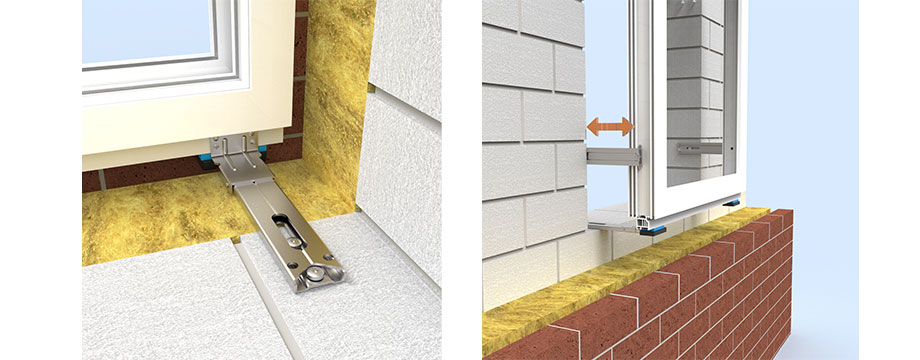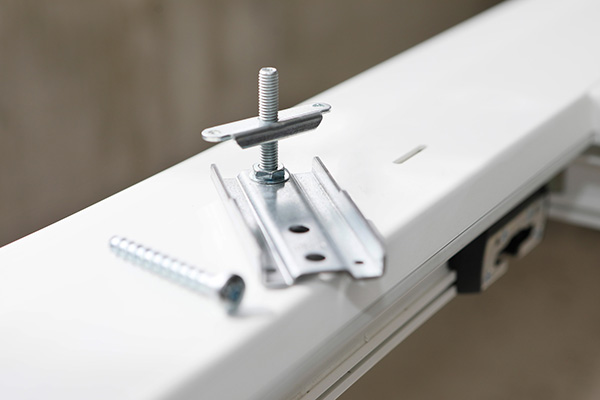 Callum Thornton, the Fenestration Product Manager for SFS UK, explains why specifiers and property managers should consider continuity of insulation around window openings as a priority in both new build and retrofit situations.
Callum Thornton, the Fenestration Product Manager for SFS UK, explains why specifiers and property managers should consider continuity of insulation around window openings as a priority in both new build and retrofit situations.
The size, shape and location of window openings have been a key feature to architectural styles down the ages, but current day concerns over energy performance mean that the actual position of fenestration units within the wall section has now taken on a far greater significance. And getting it wrong will not only be reflected in higher heating costs, but will also likely impact on occupants’ comfort and health.
As a crucial part of the building envelope, windows fulfil the roles of admitting light and offering people some security as well as a view of their surroundings, then permitting ventilation whilst preventing heat escaping. However, windows are unfortuntely usually the weakest point in the thermal envelope. Despite major advancements in glazing technology, it remains financially impractical to make windows match the energy performance of the surrounding wall or roof construction, and it is essential to define their heat loss performance - not just the centre pane value – if penalties are not to be incurred under SAP calculations . Requirements are set to be raise further under the Future Homes Standard 2025.
In addition to meeting Building Regulations and other standards such as PassivHaus, it is very important to optimise the position of window frames in relation to the building envelope’s primary plane of thermal insulation. Succeeding in this aim is also likely to depend on fully understanding and respecting the method of construction; particularly where older properties are concerned.
It is more than three decades since the BRE first identified that the floor/wall and other junctions across the building envelope were just as important as the elevations themselves. We waited until 2008 for the guidance on cold-bridging to be introduced into Building Regulations, but the subject is comprehensively addressed in the current Approved Document L, Volume 1 section on ‘Continuity of Insulation’, which emphasises how windows should be “contiguous with the insulation layer of the external wall.”

This Thermal Shield of course switches alignment depending on whether the designer utilises a cavity wall construction, or perhaps a solid masonry build, wrapped with an insulated render or EWI system. Then for existing homes – especially in conservation areas – Internal Wall Insulation (IWI) is often preferred.
The principle of continuity is important in all cases, but the latest White Paper from SFS, entitled ‘Optimising Window Placement,’ explains the challenges, technical requirements, and potential pitfalls of falling short.
The question of timing as well as alignment, also regularly arises in retrofit and refurbishment situations: where EWI is counted as the former, and window replacement as the latter – with property owners, particularly social housing landlords, generally wishing to maximise the service life of existing fenestration. Inevitably, though, many contracts constitute urgent upgrades and ‘quick fixes’, while cost implications and complications such as having to decant occupants must be considered.
In fact social housing providers often find themselves aiming to invoke measures attracting defined funding – such as ECO schemes – rather than striving to achieve best outcomes. Unfortunately, fitting new windows some years after EWI rarely sees the frames aligned contiguously with the wall insulation, and problems of thermal bridging are simply exacerbated; storing up problems for the future. Such failures can lead to higher heating bills, degradation of the building fabric and poorer health outcomes for residents.

The ‘cold spots’ created not only lead to condensation forming, but mould growth frequently ensues, with potentially life-threatening consequences through respiratory conditions. Sadly one tragic death led to the Social Housing Regulation Bill being amended in 2023 to include Awaab’s Law: compelling landlords to investigate and rectify damp and mould within a strict timeframe.
Ideally, coordinated and comprehensive upgrades across our building stock will save lives: and a key strategy for avoiding such issues should see building managers and other specifiers seeking to have high performance windows installed on special cantilever brackets, beyond the building structure; including supporting much heavier, triple-glazed windows. Inevitably, aligning these higher performing window frames with wider insulation zones, outside the main structure, demands longer cantilevers and the sustaining of greater lever-arm forces in order achieve the ultimate goal of thermal continuity.
As well as manufacturing appropriately designed and tested brackets and offering holistic technical support to all parties seeking to optimise the benefits of energy upgrades in our buildings, SFS has published a series of White Papers on the subject of external wall insulation, rainscreen systems and fenestration.
For further information, call 0330 0555888 or visit uk.sfs.com
Images © SFS
- Log in to post comments















